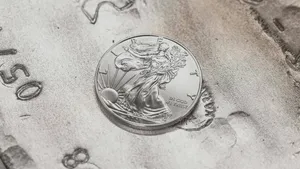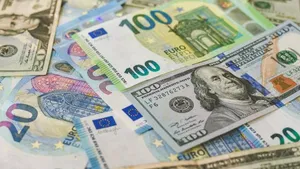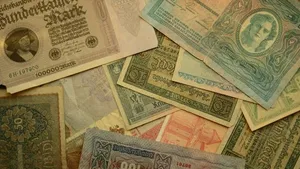The Purchasing Power Paradox: When the Economy Wins but You Lose
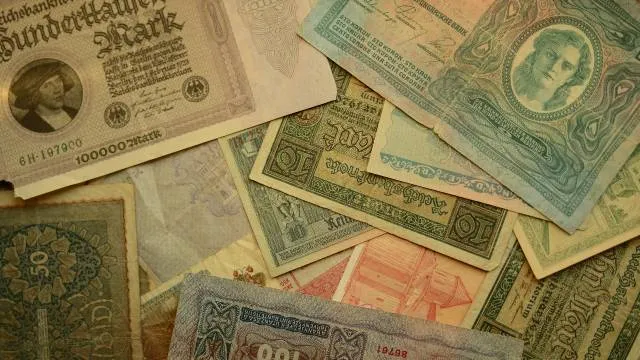
The Economy’s Up, So Why Are So Many People Down?
Have you ever wondered why your grandparents could buy a house for what now seems like pocket change? Or why a dollar buys so much less than it did decades ago? This isn’t just random economic noise; it’s a predictable pattern that’s been repeating throughout history. Every traditional currency eventually loses its purchasing power, creating what we call the Purchasing Power Paradox.
This paradox poses a fundamental challenge: while mainstream economics generally views moderate inflation as beneficial — even necessary — for economic growth and stability, individual savers invariably see their purchasing power erode over time and, for some, these losses may be catastrophic. Understanding this tension — between what may be optimal for the macroeconomy and what happens to wealth at the individual level — is crucial for anyone seeking to protect their financial future.
A Historical Overview of Currency Debasement
Ancient Rome: A Classic Case Study
Ancient Rome is broadly considered a classic example of how currency debasement and social decay can become closely linked. The Roman denarius started as a trusted, high-purity silver coin, issued with the intention of supporting one of history’s greatest empires. When first introduced around 211 BC, it contained about 4.5 grams of pure silver.1 And for nearly 300 years, its weight and purity remained remarkably stable under leaders like Julius Caesar and Augustus.
However, after ascending to the throne in 54 AD, Nero quickly launched a series of extravagant construction projects. As his reign progressed, military costs soared, and the Great Fire of 64 AD intensified the strain on the empire’s resources. Confronted with ballooning expenses, Nero made a fateful decision: rather than raise taxes (always unpopular), he reduced the silver content in the denarius while keeping its face value the same. This seemingly minor adjustment marked the beginning of a centuries-long decline.
Subsequent emperors followed Nero’s example: from a purity of greater than 90% silver in the 1st century AD, the denarius fell to under 60% purity by 200 AD, and plummeted to just 5% by 300 AD.2 By the reign of Claudius II in 269 AD, the antoninianus (a coin worth two denarii, and an early example of “money printing”) had silver content of just 2%.3 The final stage of the denarius was a duplex plated coin with a copper core and a silver surface, eventually becoming so thin that the silver quickly rubbed off after the coin left the mint.
Citizens weren’t fooled. As the intrinsic value of the coins declined, prices rose accordingly. And what began as a temporary “fix” for government finances turned into a self-reinforcing cycle. By the late 3rd century, the once-mighty Roman currency had essentially collapsed. While historians debate the relative importance of monetary factors against other drivers of Rome’s decline, it’s clear currency debasement correlated strongly with broader economic and political instability.4
Medieval Europe and Beyond
This cycle wasn’t uniquely Roman. Throughout Medieval Europe, kings regularly debased their currencies to fund wars and extravagant court expenses. One notorious method was “coin clipping,” where tiny amounts of precious metal were shaved from coins before recirculating them. The practice became so problematic in England that it led to the Great Recoinage of 1696.5
In fact, from Imperial China to Colonial America, most major civilizations faced some form of currency debasement, with varying severity and consequences. While the short-term political benefits were often tempting, the long-term economic consequences were typically devastating. This recurring pattern across different cultures and time periods suggests that currency debasement isn’t accidental; instead, debasement seems to be an inherent feature of monetary systems where political authorities control the money supply and face short-term pressures.
Modern Central Banking’s Inherent Stability Problems
Today’s central banking system may seem far more sophisticated compared to ancient coin debasement, but the underlying dynamics are strikingly similar.
From Gold Standard to Fiat Currency
The modern era of truly unrestrained currency debasement began in 1971 when President Richard Nixon ended the dollar’s convertibility to gold. On August 15, 1971, Nixon announced the suspension of gold convertibility,6 transitioning the dollar to a pure “fiat” system, where currency derives its value solely from government decree rather than any intrinsic worth.
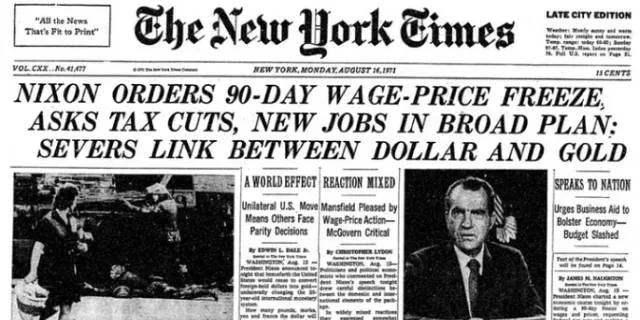
This decision stemmed from mounting pressures on the Bretton Woods system. The U.S. was facing what economists call the “Triffin Dilemma” — the inherent conflict between providing global liquidity and maintaining domestic currency stability.6 Nixon’s actions, in response, effectively ended a monetary system that had structured international finance since World War II.
Since then, the dollar has suffered substantial purchasing power loss; however, this decline follows predictable economic patterns rather than random fluctuations.
The Economic Case for Moderate Inflation
It’s important to understand that most economists today don’t view this purchasing power erosion as inherently problematic. Instead, most economists agree that low, stable, and (importantly) predictable inflation provides several key benefits:
Monetary Policy Flexibility: Once expectations of moderate inflation are factored into nominal interest rates, it gives those interest rates room to go both up and down in response to changing economic conditions.8 This prevents central banks from hitting the “zero lower bound” that constrained policy during the 2008 financial crisis and COVID-19 pandemic.
Investment Incentives: Nobel laureate James Tobin noted in his seminal 1965 work that moderate inflation causes businesses to substitute investment in physical capital (plant, equipment, and inventories) for the money balances in their asset portfolios.9 This theoretical framework, known as the “Tobin effect,” suggests that moderate inflation can boost productive investment by making money holdings less attractive relative to real capital.
Economic Lubrication: Small amounts of inflation can help alleviate wage and price rigidities which, if left unaddressed, might lead to unemployment and economic inefficiency. When nominal wages are sticky downward, moderate inflation allows real wages to adjust without requiring actual wage cuts.10
Debt Relief: Inflation makes it easier on debtors, who repay their loans with money that is less valuable than the money they borrowed. Since governments are typically among the largest debtors in any economy, this can provide fiscal relief.11
The Superneutrality Question
The academic debate over inflation’s long-term effects centers on the concept of “superneutrality.” Superneutrality of money holds that not only is the real economy NOT affected by the level of the money supply, but also that the rate of money supply growth has no effect on real variables.12
However, research has shown superneutrality is more accurately described as a technical result stemming from specific theoretical assumptions. Studies have shown that when these assumptions are modified, or when more realistic dynamics are introduced, monetary growth can indeed have real effects. While Carmichael13 laid the groundwork for this view, later empirical studies are mixed, with variations depending on the chosen methodology, time period, and the economic context being studied. For example, research by King and Watson (1997), as well as Laubach (2001), highlights how deviations from the strict assumptions of superneutrality can lead to different outcomes, particularly when considering longer-term adjustments in real variables. 13
The Political Economy Challenge
Although economists typically favor moderate inflation over the long term, political and economic pressures often make it difficult to maintain this balance consistently over extended periods.
The Democratic Trilemma
Central banks face a trilemma. They’re expected to:
- Keep inflation low and stable
- Support economic growth and employment
- Ensure financial stability
These goals often conflict, especially during economic downturns. When recessions threaten, central banks typically prioritize growth and stability over strict adherence to inflation targets. In general, they’ll lower interest rates and expand the money supply in response, which provides short-term relief, but can contribute to longer-term currency depreciation.
Political Cycle vs. Monetary Stability: Research shows that political pressures can complicate central banks’ ability to maintain consistently low inflation over extended periods.14 Politicians face election cycles that prioritize short-term economic performance, while monetary stability requires long-term thinking. This creates a systematic bias toward accommodative policies that weaken purchasing power, even when central banks maintain formal independence.
The Debt Trap
Modern governments can fall into fiscal patterns that make currency debasement an increasingly appealing option. As national debt grows larger relative to economic output, governments find themselves with fewer viable choices:
- Default on the debt (politically and economically catastrophic)
- Drastically raise taxes (politically unpopular)
- Inflate away the debt by debasing the currency (politically easiest)
The United States, for example, saw its debt-to-GDP ratio climb from about 23% in 1974 to approximately 120% in 2024.15 While many countries have successfully managed high debt levels, this mounting burden can create incentives for policies that allow inflation to shoot past target levels over time.
Furthermore, net interest payments on federal debt have grown significantly as a share of GDP, creating additional pressure for policies that keep real interest rates (interest rates adjusted for inflation) manageable. While this doesn’t necessarily guarantee high inflation, it does create structural incentives that can bias policy toward currency depreciation over the long run.
The Mathematics of Purchasing Power Deterioration
The erosion of purchasing power follows mathematical principles that make clear the significant long-term impact of even moderate inflation on individual savers.
The Rule of 72
A useful tool for understanding how inflation affects purchasing power is the “Rule of 72.” This formula helps you quickly estimate how long it takes for money to lose half its value:
Years to halve purchasing power ≈ 72 ÷ Annual inflation rate
At the Federal Reserve’s target inflation rate of 2%: 72 ÷ 2 = 36 years — or, about the length of a person’s working life. At 4% inflation: 72 ÷ 4 = 18 years. At 8% inflation (which the US experienced in 2022): 72 ÷ 8 = 9 years.
While this rule only offers an approximation (actual results depend on compounding frequency and inflation variability), it highlights why even “moderate” inflation can impact us substantially over timeframes that affect us personally.
Compounding Effects
Inflation works like compound interest, but in reverse. Instead of subtracting a fixed amount each year, it reduces purchasing power by a percentage, so the effect grows over time.
The formula to calculate actual future purchasing power (as opposed to the Rule of 72, which is just a quick estimate) takes this compounding into account:
Future purchasing power = Present value / (1 + inflation rate)^years
Under sustained 3% inflation, $100 today would have purchasing power of just $49.19 after 24 years — less than half its original value. (Of course, actual inflation rates fluctuate, and this calculation assumes consistent rates — something that rarely occurs in practice.)
The Money Supply Connection
Modern economic theory establishes a relationship between money supply expansion and long-term inflation through the equation of exchange: MV = PQ, where:
- M = Money supply
- V = Velocity of money (how quickly it circulates)
- P = Price level
- Q = Quantity of goods and services produced
This relationship suggests that if the money supply (M) grows faster than economic output (Q), and velocity (V) remains relatively stable, then prices (P) tend to rise over time. (Note: velocity can vary significantly, particularly during economic disruptions, making short-term predictions difficult.)
Since 1971, the U.S. money supply has generally grown faster than economic output, contributing to long-term declines in purchasing power. During exceptional events like the 2020 pandemic, when the money supply expanded dramatically, inflation indeed followed patterns predicted by this relationship. However, it’s important to note our economic system is complex, and other factors — such as supply chain disruptions and labor shortages — played significant roles as well.
Why This Matters to Everyday People, Not Just Economists
The steady erosion of purchasing power isn’t just an abstract economic concept; instead, it fundamentally affects people’s lives in ways that aggregate economic data often does not capture.
The Individual vs. Aggregate Disconnect
Here lies the heart of the purchasing power paradox: policies that strengthen aggregate economic performance can impose significant costs on individual savers. Research shows that while economists generally agree moderate inflation benefits macroeconomic stability, the impact on personal financial planning can be substantial.16 The improving macroeconomic environment offers little comfort to individual savers watching their buying power slowly disappear.
The Invisible Tax
A helpful way of thinking about inflation is that it acts as an implicit tax on money holdings, disproportionately affecting those who hold cash or fixed-rate assets. Unlike explicit taxes, there’s no legislative process or exemption available. Instead, inflation silently and systematically transfers wealth from holders of monetary assets to debtors and holders of real assets over time.
For instance, when your salary increases by 2% but inflation runs at 4%, you’ve effectively experienced a 2% reduction in purchasing power — a 2% hidden tax — even though your nominal income has risen. This ends up benefiting your employer — the business owner — who pays (on average) 4% more for things in the marketplace, but can pass those cost increases to their customers by charging 4% more. Many people focus primarily on nominal rather than real (inflation-adjusted) income changes, which can obscure this transfer.
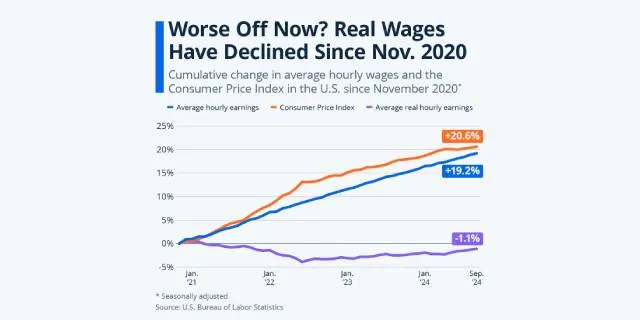
Retirement Planning Disaster
The long-term nature of purchasing power decline makes it especially important for retirement planning. Someone planning for 30 or 40 years of retirement must account for how inflation affects their savings over time.
At 3% inflation, prices are expected to double in 24 years. For a 65-year-old retiree, this means prices will double by age 89. Without investment returns that consistently outpace inflation, retirement savings won’t keep up with rising prices, leading to a lower standard of living in your later years.
This dynamic explains why financial advisors often recommend that even conservative investors maintain some exposure to growth assets, like equities, throughout retirement — traditional fixed-income investments often struggle to preserve purchasing power over a person’s lifetime.
The Middle-Class Squeeze
Currency debasement also contributes to wealth inequality, though the extent depends on many factors. Those holding appreciating assets (stocks, real estate, businesses) tend to maintain or increase their purchasing power during inflationary periods. Meanwhile, those relying primarily on wages or fixed incomes fall behind if their compensation doesn’t keep pace with price increases.
Housing costs, for example, have increased significantly relative to incomes since the 1970s, though this reflects a complex mix of factors including demographics, zoning laws, and construction costs, not just monetary policy. However, the feeling of “not having enough money because everything’s so expensive” can have substantial personal psychological effects that are not readily reflected in economic data.
The Hidden Social Costs
Beyond direct economic impacts, persistent purchasing power erosion can create broader social stresses:
- It discourages prudent saving behavior, particularly among those without financial savvy
- It rewards excessive borrowing
- It creates economic uncertainty that makes long-term planning difficult
- It fosters feelings of the entire economic system being rigged
These dynamics can breed social cynicism and short-term thinking that ripple throughout society. The systematic transfer of wealth from savers to asset owners creates generational tensions, and undermines the social contract that hard work and saving lead to prosperity.
Counterexamples and Nuances
It’s important to acknowledge that the purchasing power paradox isn’t universal or inevitable. Several examples demonstrate that sustained price stability is possible:
Successful Monetary Regimes: Countries like Germany and Switzerland have maintained relatively low inflation rates for extended periods through strong institutional frameworks and central bank independence. In addition, some emerging economies, such as Mexico, Chile, and Israel (in the 1980s), have successfully transitioned from high-inflation to low-inflation regimes.
Technological Deflation: In specific sectors, technological progress has created genuine deflation in quality-adjusted prices. Computing power, telecommunications, and some consumer goods have become dramatically cheaper and better over time, offsetting monetary inflation in those areas.
Asset Appreciation: While cash loses purchasing power, many individuals preserve or increase their wealth through asset ownership. Real estate, stocks, and businesses generally provide inflation protection, though they come with their own associated volatility and risks.
Learning from History’s Lessons
The pattern of currency debasement stretches back thousands of years, from ancient Rome to modern America. The specific mechanics change — from reducing silver content to digital money “printing” — but the fundamental dynamics remain consistent, suggesting a persistent challenge, but not an inevitable fate.
What can we learn from this historical pattern?
First: expect traditional currencies to gradually lose purchasing power over time, particularly in democratic societies with high debt levels. This isn’t necessarily a conspiracy or a flaw — modern economic theory supports moderate inflation for macroeconomic stability. However, unexpected and damaging purchasing power declines is an inherent feature of systems where political authorities control the money supply and face mounting short-term pressures that conflict with long-term monetary stability.
The real question isn’t whether moderate inflation is beneficial to society — economic science says it can be. But research also shows that central bank independence and credible institutional commitments matter enormously for price stability.17 The challenge, then, is whether democratic political systems can be trusted to maintain the institutional frameworks necessary to keep inflation truly moderate over many decades.
Second: the calculated effects of even moderate inflation show us they matter for individual financial planning — especially across decades. The Federal Reserve’s 2% target, while economically justifiable, cuts everyone’s purchasing power by nearly 40% over just 25 years.
Finally, protecting yourself requires understanding these dynamics and planning accordingly. Holding substantial savings in cash or low-yielding fixed-rate assets over long periods virtually guarantees purchasing power loss. Productive assets that can adjust to inflation — like stocks, real estate, and businesses — generally provide better long-term protection, though they come with their own risks and volatility.
The question for the 21st century, then, isn’t whether we should have moderate inflation; the question is whether democratic political systems can maintain the institutional frameworks needed to keep inflation truly moderate over the long term, particularly as debt levels rise and political pressures intensify.
Research suggests that some of the factors which facilitated low average inflation in recent decades — such as globalization, de-unionization, and fiscal restraint — are weakening.18 While this doesn’t guarantee higher inflation, it suggests maintaining price stability may be becoming more difficult.
Until these institutional questions are resolved, understanding the purchasing power paradox is critical for anyone interested in long-term financial planning. History suggests the political and economic forces driving gradual currency debasement are deeply embedded in human institutions, making this knowledge practically important rather than just an academic thought exercise.
The purchasing power paradox ultimately reflects a fundamental tension in modern democratic capitalism: the potential conflict between policies that may optimize short-term political and economic performance versus those that preserve individual purchasing power over a lifetime. Recognizing this tension — and planning for it — is the mark of savvy financial stewardship, and should not be dismissed as doom-and-gloom alarmism.
References
- Crawford, M. (1974). Roman republican coinage / 2, Studies, plates and indexes. Cambridge University Press.
- Butcher, K. (2015). Debasement and the decline of Rome. In Studies in ancient coinage in honor of Andrew Burnett (pp. 181-205).
- Harl, K. W. (1996). Coinage in the Roman Economy, 300 B.C. to A.D. 700. Johns Hopkins University Press.
- Ward-Perkins, B. (2006). The Fall of Rome and the End of Civilization. Oxford University Press.
- Waddell, B. (2022). The Economic Crisis of the 1690s in England. Cambridge University Press.
- Office of the Historian. (2019). Nixon and the End of the Bretton Woods System, 1971-1973. U.S. Department of State.
- Bordo, M. (2017). The operation and demise of the Bretton Woods System: 1958-1971. NBER Working Paper, No. 23189.
- Blanchard, O., Dell’Ariccia, G., & Malandino, P. (2010). Rethinking macroeconomic policy. Journal of Money, Credit and Banking, 42(s1), 199-215.
- Tobin, J. (1965). Money and Economic Growth. Econometrica, 33(4), 671-684. https://www.jstor.org/stable/1910352
- Akerlof, G. A., Dickens, W. T., & Perry, G. L. (1996). The macroeconomics of low inflation. Brookings Papers on Economic Activity, 1996(1), 1-76.
- Blanchard, O. (2019). Public debt and low interest rates. American Economic Review, 109(4), 1197-1229.
- Sidrauski, M. (1967). Rational choice and patterns of growth in a monetary economy. American Economic Review, 57(2), 534-544.
- Carmichael, J. (1980). Money, Inflation and Economic Growth: Conditions for Superneutrality. RBA Research Discussion Papers, rdp8004, Reserve Bank of Australia.
- Alesina, A., & Summers, L. H. (1993). Central bank independence and macroeconomic performance: some comparative evidence. Journal of Money, Credit and Banking, 25(2), 151-162.
- FRED. (2024). Federal Debt: Total Public Debt as Percent of Gross Domestic Product. Federal Reserve Bank of St. Louis. https://fred.stlouisfed.org/series/GFDEGDQ188S
- Romer, D. (2006). Advanced Macroeconomics (3rd ed.). McGraw-Hill.
- Cukierman, A., Webb, S. B., & Neyapti, B. (1992). Measuring the independence of central banks and its effect on policy outcomes. The World Bank Economic Review, 6(3), 353-398.
- Blanchard, O., Dell’Ariccia, G., & Mauro, P. (2010). Rethinking Macroeconomic Policy. Journal of Money, Credit and Banking, 42(s1), 199-215. https://doi.org/10.1111/j.1538-4616.2010.00334.x
King, R. G., & Watson, M. W. (1997). Testing long-run neutrality. Federal Reserve Bank of Richmond Economic Quarterly, 83(4), 69-101.
Laubach, T. (2001). Measuring the natural rate of interest. Review of Economics and Statistics, 83(4), 581-594. https://doi.org/10.1162/003465301753237805
- Butcher, K.; Ponting, M. (2015). The metallurgy of Roman silver coinage: from the reform of Nero to the reform of Trajan. Cambridge University Press.
- Haskell, H.J. (1939). The New Deal in Old Rome: How Government in the Ancient World Tried to Deal with Modern Problems. United States: A.A. Knopf.
- Office of the Historian. (2019). Nixon and the End of the Bretton Woods System, 1971–1973. State.gov. https://history.state.gov/milestones/1969-1976/nixon-shock
- Roman Currency Debasement | UNRV Roman History. (2025). Unrv.com. https://www.unrv.com/economy/currency-debasement.php
- Sayles, W.G. (2007). Ancient Coin Collecting III: The Roman World - Politics and Propaganda. United States: Krause Publications.
This article is for educational purposes only, and should not be used for any other purpose. The information contained herein does not constitute and should not be construed as an offering of advisory services or an offer to sell or solicitation to buy any securities or related financial instruments in any jurisdiction.
Certain information contained herein concerning economic trends and performance is based on or derived from information provided by independent third-party sources. Blockchainsure believes that the sources from which such information has been obtained are reliable; however, Blockchainsure cannot guarantee the accuracy of such information.
